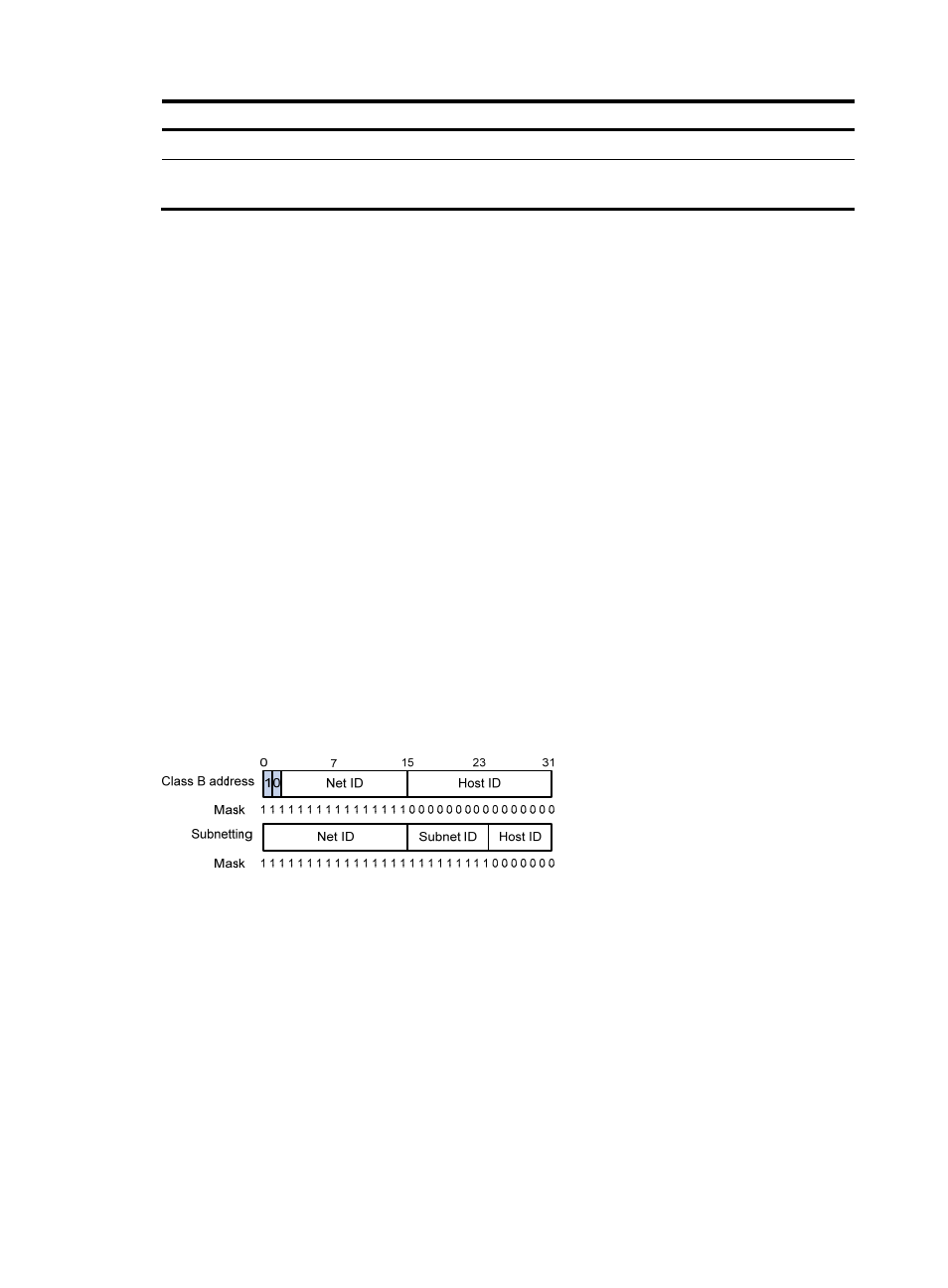Special ip addresses, Subnetting and masking, Configuration procedure – H3C Technologies H3C S12500-X Series Switches User Manual
Page 29

18
Class Address
range Remarks
D
224.0.0.0 to 239.255.255.255
Multicast addresses.
E
240.0.0.0 to 255.255.255.255
Reserved for future use, except for the broadcast
address 255.255.255.255.
Special IP addresses
The following IP addresses are for special use and cannot be used as host IP addresses:
•
IP address with an all-zero net ID—Identifies a host on the local network. For example, IP address
0.0.0.16 indicates the host with a host ID of 16 on the local network.
•
IP address with an all-zero host ID—Identifies a network.
•
IP address with an all-one host ID—Identifies a directed broadcast address. For example, a packet
with the destination address of 192.168.1.255 will be broadcast to all the hosts on the network
192.168.1.0.
Subnetting and masking
Subnetting divides a network into smaller networks called subnets by using some bits of the host ID to
create a subnet ID.
Masking identifies the boundary between the host ID and the combination of net ID and subnet ID.
Each subnet mask comprises 32 bits that correspond to the bits in an IP address. In a subnet mask,
consecutive ones represent the net ID and subnet ID, and consecutive zeros represent the host ID.
Before being subnetted, Class A, B, and C networks use these default masks (also called natural masks):
255.0.0.0, 255.255.0.0, and 255.255.255.0, respectively.
Figure 7 Subnetting a Class B network
Subnetting increases the number of addresses that cannot be assigned to hosts. Therefore, using subnets
means accommodating fewer hosts.
For example, a Class B network without subnetting can accommodate 1022 more hosts than the same
network subnetted into 512 subnets.
•
Without subnetting—65534 hosts (2
16
– 2). (The two deducted addresses are the broadcast
address, which has an all-one host ID, and the network address, which has an all-zero host ID.)
•
With subnetting—Using the first nine bits of the host-id for subnetting provides 512 (2
9
) subnets.
However, only seven bits remain available for the host ID. This allows 126 (2
7
– 2) hosts in each
subnet, a total of 64512 hosts (512 × 126).
